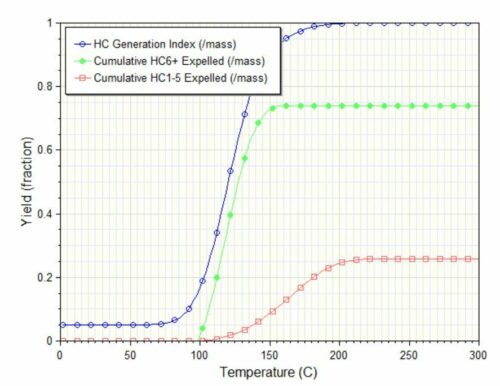Organofacies
Concept

An organofacies is defined as a collection of kerogens derived from common organic precursors, deposited under similar environmental conditions and exposed to similar early diagenetic histories (Pepper and Corvi, 1995). As the organofacies concept combines kerogen type, depositional environment and generation kinetics, it makes the kerogen kinetic classification based on the organofacies concept very useful for modelling hydrocarbon generation.
Five different organofacies have been defined by Pepper and Corvi, 1995: A, B, C, D/E and F. The organofacies can briefly be related to the three kerogen types. The varying source rock quality of, e.g. a marine shale is represented by varying HI and TOC values, but the same organofacies B and generation kinetics.
A marine shale with low HI due to e.g. oxidation of the marine kerogen (alginite) is thus modelled as organofacies B and not incorrectly as kerogen Type II/III or even kerogen Type III, which would have implications for the predicted hydrocarbon phase (Petersen, 2017).
Organofacies listing

Organofacies composition and properties
References
Pepper, A.S., Corvi, P.J., 1995. Simple kinetic models of petroleum formation. Part I: oil and gas generation from kerogen. Marine and Petroleum Geology 12, 291–319.
Petersen, H.I., 2017. Source rocks, types and petroleum potential, in: Suárez-Ruiz, I., Mendonça Filho, J.G. (Eds.), The Role of Organic Petrology in the Exploration of Conventional and Unconventional Hydrocarbon Systems, Geology: Current and Future Developments Vol 1. Bentham Books, pp. 105–131.